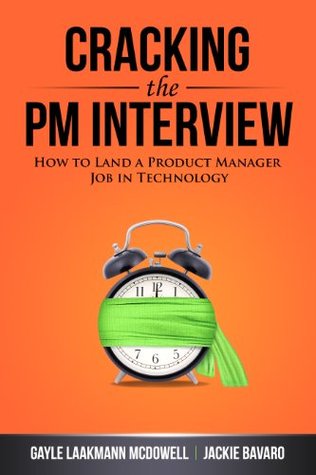More on this book
Community
Kindle Notes & Highlights
Read between
July 28, 2020 - July 4, 2021
A PM is responsible for making sure that a team ships a great product.
When a team has a TPM and a PM, the product manager focuses on Research & Planning and Release, while the technical product manager is more focused on Design and Implement & Test.
Once he’s chosen a feature set, the product manager becomes the expert on them. He’ll think deeply about the problems he’s trying to solve and the goals of the features. In the coming phases, everyone on the team will have questions, including “why are we working on this?”, and the PM will need to have answers.
functional specification (spec) that includes things like: Goals Use Cases Requirements Wireframes Bullet points describing every possible state of the feature Internationalization Security
Dogfooding comes from the term “Eat your own dogfood,” and simply means using your own product yourself. For example, people at Microsoft run early versions of the next Windows release on their computers every day. Facebook employees use Facebook Groups to communicate.
The launch process varies from team to team but usually involves things like: Running through a launch checklist. There might be final approvals from key stakeholders like Legal or coordination steps with teams like Marketing and Operations. Making sure that the teams who will support the product going forward are prepared. For a web product this might be the customer service team; for a hardware product it could be the manufacturing team; for a service-based product it could be the operations team. Preparing for all the things that could go wrong. As the release nears, urgent issues
...more
The good thing about working on consumer products is that everyone understands the target customer and use cases. Unfortunately, that’s also the bad thing. On a consumer facing product, the engineers will often have lots of product ideas and won’t rely as much on the product manager to come up with features and design. PMs can often act like shepherds and editors, guiding the product to a good endpoint, rather than being the person who makes all the decisions.
Depending on the team, sometimes PMs on B2B products are responsible for thinking about how product decisions will affect revenue. They’ll need to balance features that match their long-term strategy against features that current big customers are clamoring for.
Often, a mature product’s biggest competitor is the last version of that same product.
In fact, many tech companies like Google, Microsoft, Facebook, and Yahoo recruit product managers directly out of college. They’ve found that passion, intellect, a strong customer focus, and lots of energy can be a winning combination for great PMs.
Product managers look beyond what customers say to see the hidden needs and deeper goals. When Oxo, a kitchen utensil company, asked customers what was wrong with their measuring cup, they talked about the cup breaking when they dropped it or its having a slippery handle. But when they watched people use the measuring cup, they saw people pour, then bend down to read the measurements, then pour, then bend, then pour, then bend.
As a PM, you can tell your team what you want them to build, but then they’ll tell you how long it will take to build it. If the timeline is too long, you can’t just tell them to code faster; it won’t work. Instead, if you have external deadlines you want to hit, you need to make tradeoffs and negotiate. You either need to cut features or find a way to parallelize the work and bring on more people to help out. Sometimes you can be even more clever and find ways to reduce the rest of your engineers’ workloads, such as getting them out of unnecessary meetings or having them temporarily spend
...more
People who are new to PMing sometimes think that coming up with ideas is the most important part of the job. In practice, execution of an idea is much more important.



1) Every small startup (<60 people) seems to have that one overworked product manager who can't be in enough places at once and is usually the last person to get help as t…